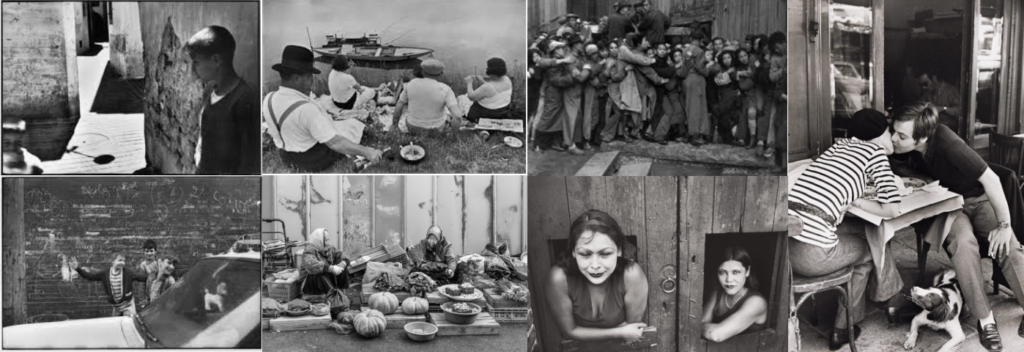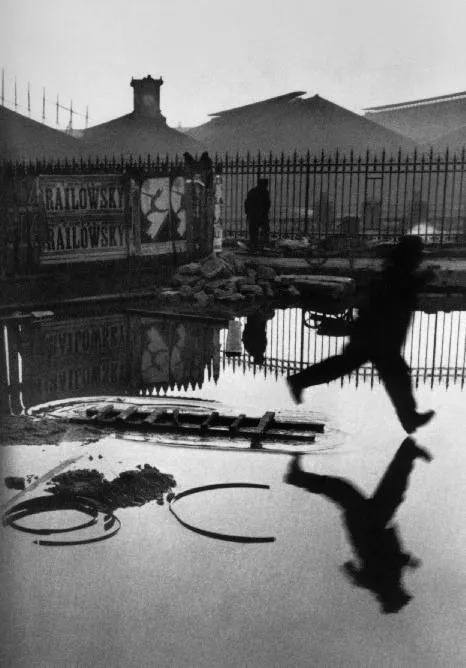Henri Cartier-Bresson (who was born 22nd august 1908, Chanteloup, France—died August 3, 2004, Céreste) he was originally interested in painting g but photography took his eye. but now he is a French photographer whose humane, spontaneous photographs helped establish photojournalism as an art form. His theory that photography can capture the meaning beneath outward appearance in instants of extraordinary clarity is perhaps best expressed in his book Images à la sauvette (1952; The Decisive Moment).

Why is a camera an extension of the eye?
was an extension of his eye because it allowed him to observe and capture the world with a sense of freedom and immediacy. He viewed it as a tool for rapid observation and capturing fleeting moments, enabling him to capture the “decisive moment”. He favoured lightweight, unobtrusive cameras like the Leica to minimize the impact on his subjects and to capture candid, natural images
What is the physical pleasure in making photographs?
Despite a few challenges he faced with his art, Cartier-Bresson had a simple philosophy about the thing that consumed his life: “Photography is a physical pleasure, it doesn’t take much brains, it takes sensitivity a finger and two legs
How can photography be likened to hunting?
can be likened to hunting because he actively sought out and pursued “the decisive moment,” which he saw as the fleeting, unique, and essential instant within a scene. Like a hunter, he would patiently wait, observe, and then quickly seize the opportune moment to capture it with his camera. This involved understanding the environment, anticipating potential subjects, and reacting swiftly to create the perfect image

Henri Cartier-Bresson’s theory of the decisive moment –
For Cartier-Bresson, it was the moment “when the visual and emotional elements of reality captured in the photograph align in perfect synchrony.” It’s the split second when the story, composition, and emotion culminate into a singular, powerful image.
analysis –

visual –
in this image you can see that’s its a monochrome image
form –
this image has in it a stair case, with a women walking up it and lots of pigeon’s moving in different directions frantically
composition –
its arranged so the the shape of the stairs are quite obvious, by this you can see with some of the pinions are sat on a railing which is the same shapes and also the pigeons are mostly following the railing up or down which enveloped the leading lines. furthermore you can see that the posture of the women you can tell that she’s following up the stairs.
capturing a moment –
within this image you can see that the women making her way up the stairs, has frightened the pigeons which made them fly out the lots of directions
technical –
within this image you can see that there is quite a high shutter speed, as most of the pigeon’s that are moving are in focus and the person walking up the stairs is also in focus.
second analysis –

visual –
from this image you can see that from the railings, there is 3 horizontal lines which help you focus on the man leaping. Also you can see that he has used the rule of third’s which helps it with a appealing composition. Within this image he removed the colour which enhanced the dep’t and details within the image, which could also be seen as nostalgic. With the strong tonal range of the heavy highlights + shadows further enhances the contrast of the image.
technical –
the camera that he used he was Leica range fighter which helped his be discrete when taking his photos and also his camera was very varsity but that it could take good photos close up of far away. his lenses was a 50mm which made it seem like it was taken with the same view of a human eye.
he had clarity and sharp focus which suggests that there is a small aperture which there was also a quicker shutter speed, this how’s that there was a smaller motion blur. The bright light in the sky reflex’s perfectly in the puddle, which makes that shadow of the man framed clearly.
contextual/ conceptual
this image became one of his most popular images, revolutionising street photography and candid photos. which perfectly represents his philocaly of the decisive moment.
